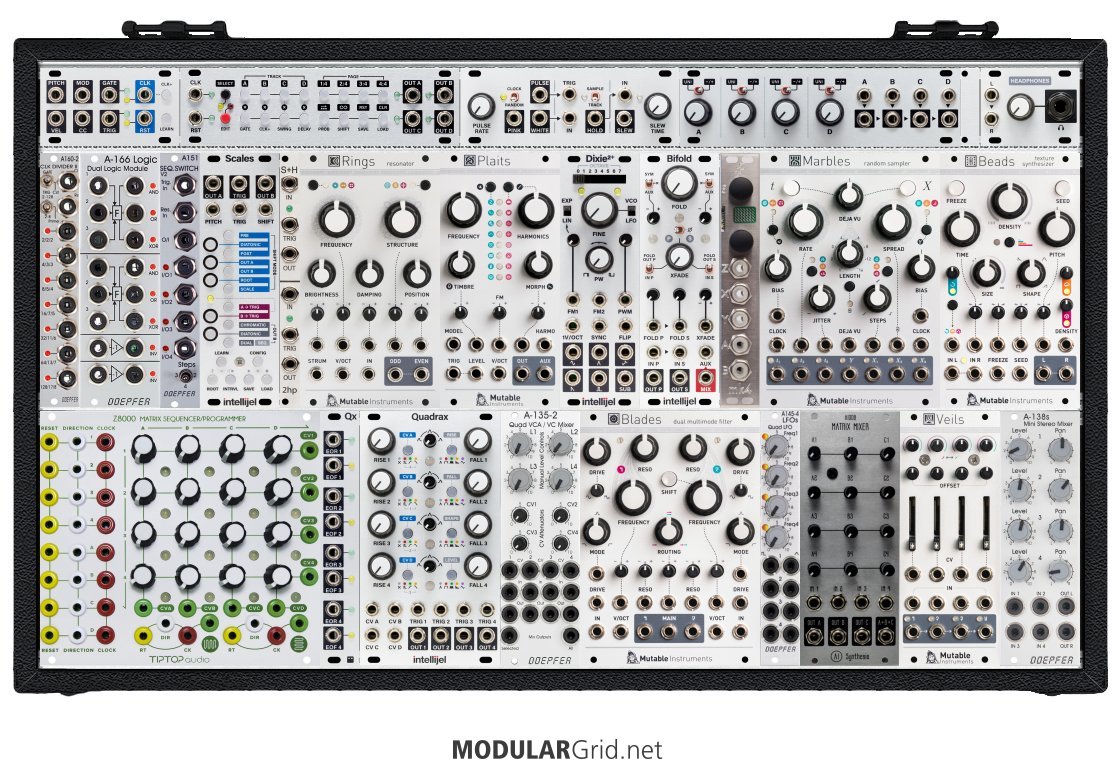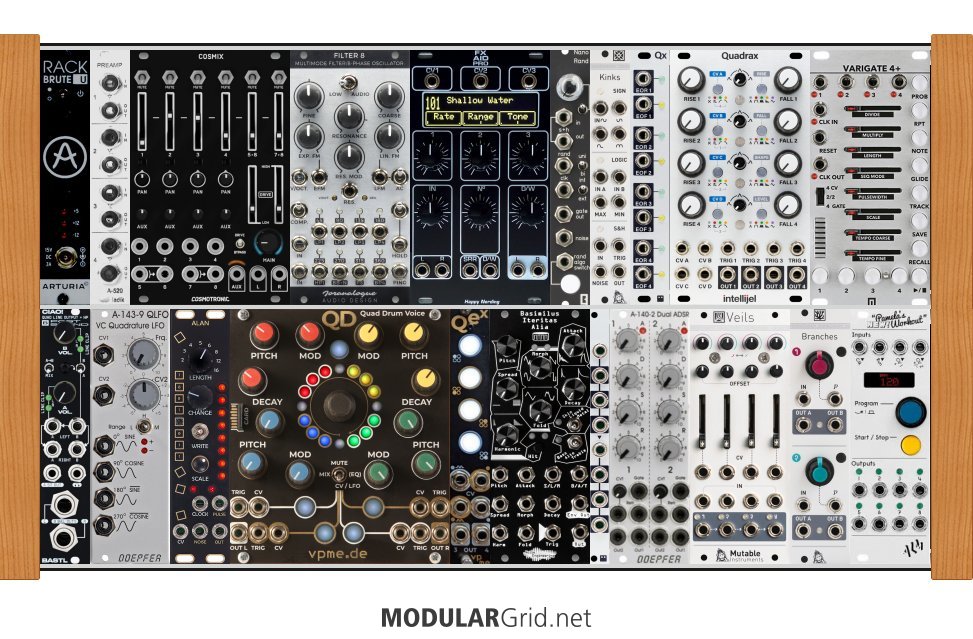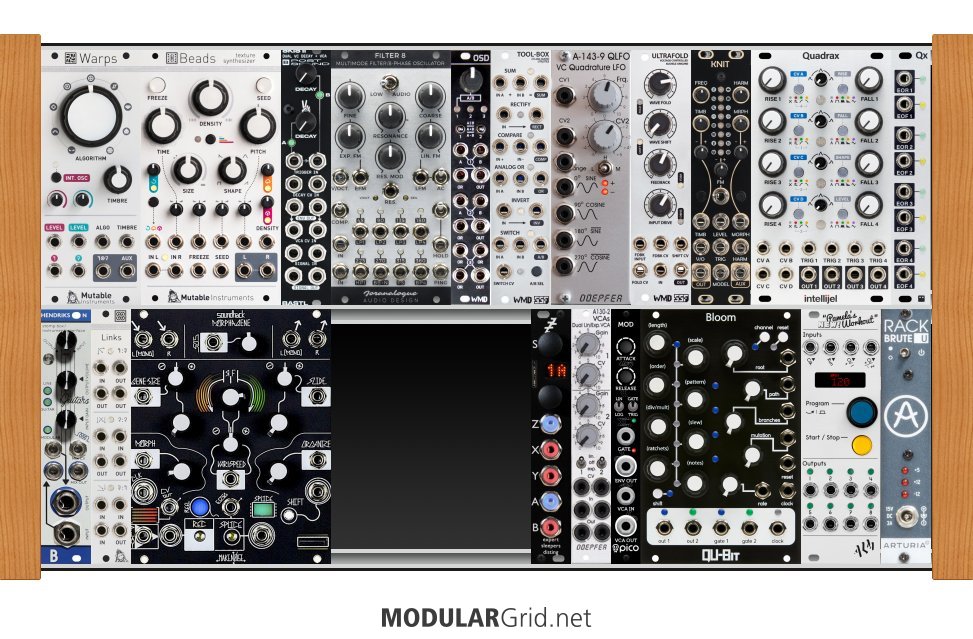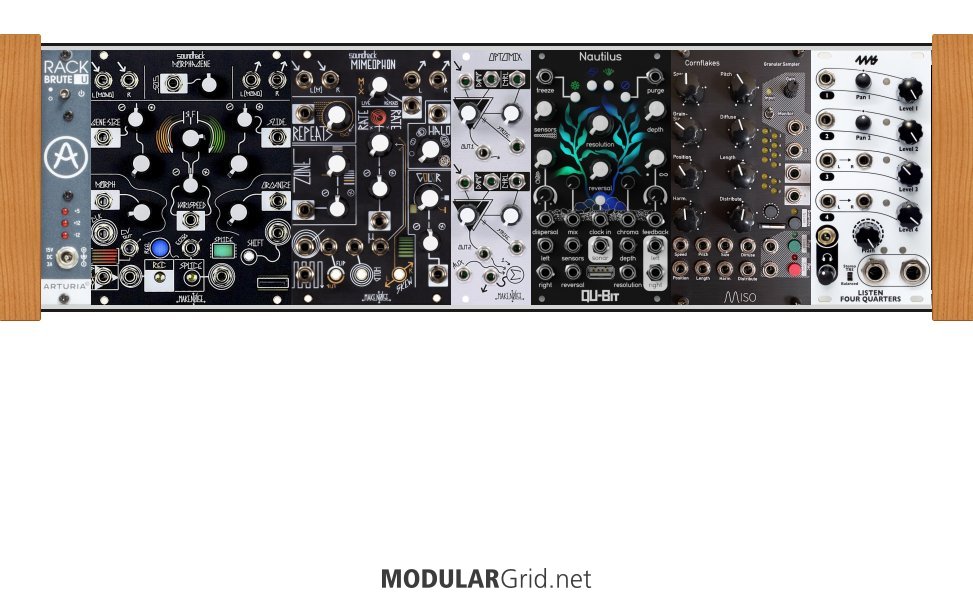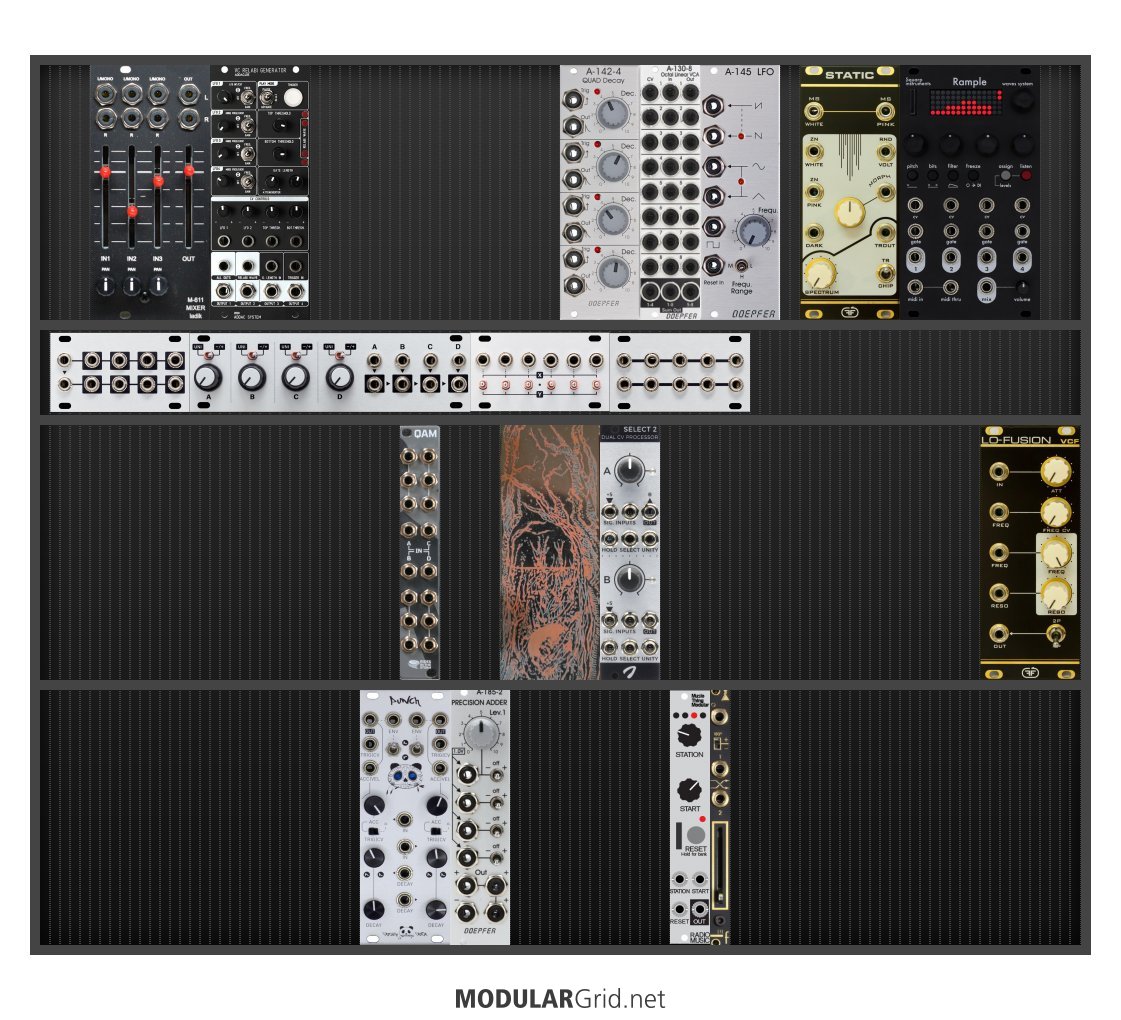OCHD gives 8 random LFOS for modulation.
-- jdesole
Hi Jdesole,
I don't think that's correct. I own a Øchd and yes it does provide me 8 LFO outputs but they are somehow all related to each other. You have one knob to adjust the speed of the LFO but the outputs are kind of "divided clock outputs" from each other. Or in other words, with an Øchd you don't have 8 independent LFOs, no you have in fact one LFO with eight (8) outputs. So it's great for simple LFO functionality for a large setup but for your case & casing with a rather small setup you should rather look for 2 or 4 independent LFOs (either in one or more modules).
When you get started, start with a bigger rack than you planned (you will not regret that in the near future) and start with a few major modules only, then gain some experience, learn from that and based on that new obtained experience and knowledge you then buy the next small batch of modules and repeat the same thing; in other words don't buy everything in one go.
Good luck with the planning, do some more research and reading and once you get into it, have fun with it :-) Kind regards, Garfield.
-- GarfieldModular
I don't think that's correct. They are related to each other in the same way that metronomes in Ligeti's Symphonic Poem are related to each other. Meaning, it you let them run for long enough, you might stumble upon a repeating configuration at some point. From the description on Instruō's website: "Each independent core is free running with rates configured from fastest to slowest arranged from top to bottom. Each frequency range was tuned by ear during development to give the optimum spread of control frequencies running in parallel. Being 100% analogue, the LFO’s will phase organically with the ability to ebb and flow together with their global frequency control."
But this has nothing to do with the OP. You clearly need to research a bit more how some modules work, specially the sequencing ones. It's a big search as there are lots of possibilities and none is perfect, although one might be perfect for YOU. Between interface, functionality, flexibility, amount of channels, etc... it gets quite difficult and you normally don't know how you get along with one until you try it... So I'd take advantage of the 2nd hand market for trying some out! ;)
Regarding that and your 12U project, I remember having read that Pressure Points does not need the Brains expander, if you're pairing it with the 2nd version of René. I might be wrng, but I think that is something that you should research, before you waste money on something you don't need.
As per utilities you do need much more, but their use only becomes apparent when you do start patching and don't have the means to achieve something you're trying to do, IMO. Otherwise its very theoretical and even I didn't get the point of having some I had from the very beginning... But sure enough, things like clock dividers, sequential switches, rectifiers and, in fact, mixing of all sorts, do open all your modules up, as I'm slowly finding out!! :D You need much less big 'guns', if you have the right 'ammunition', I suppose. And those are the utilities.
But they are also, somehow, connected with a kind of patching that lots of people have no interest in apparently, so yeah...
Your build is still very much full of inputs (on the big modules) and almost nothing to send them (as in modulation, event creators/modulators, etc) and even less ways to control how much and how often they are going to be sent (as in, enough VCAs and attenuators/verters). So my advice is to reduce, research and redraw.


